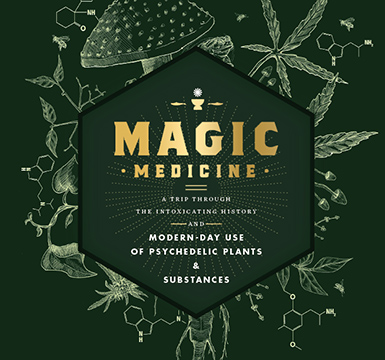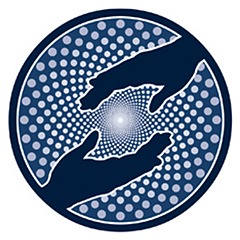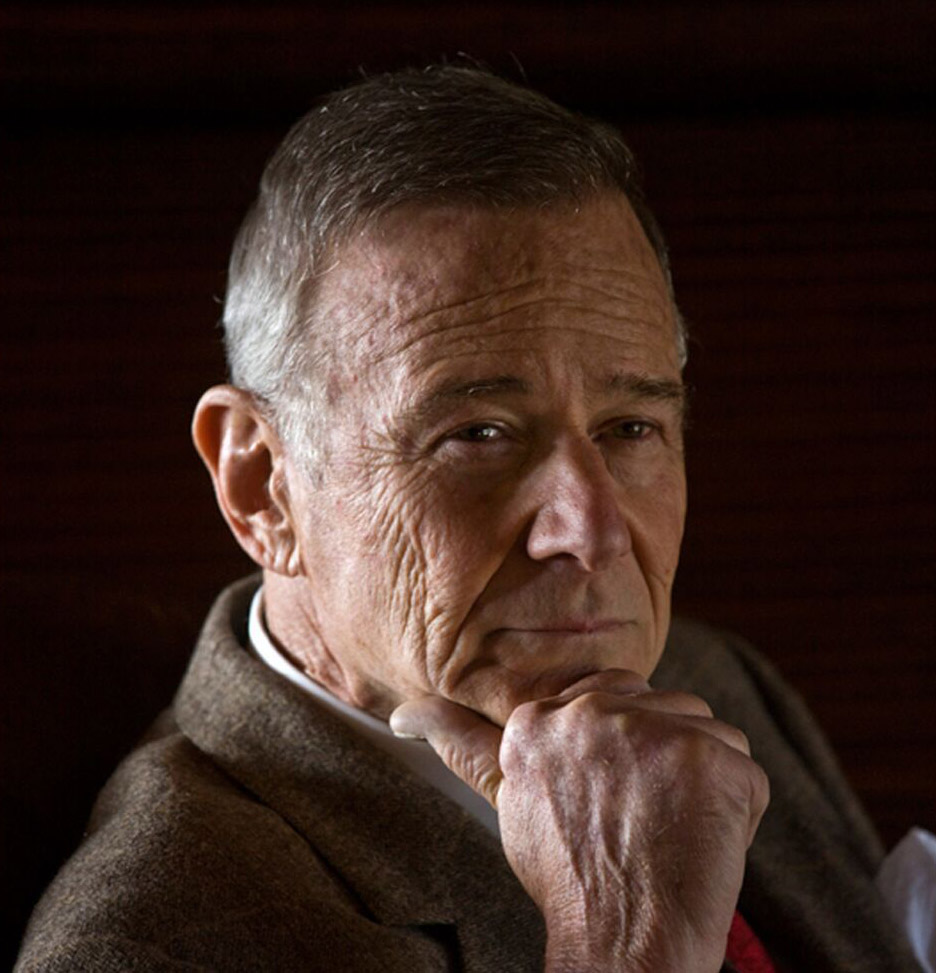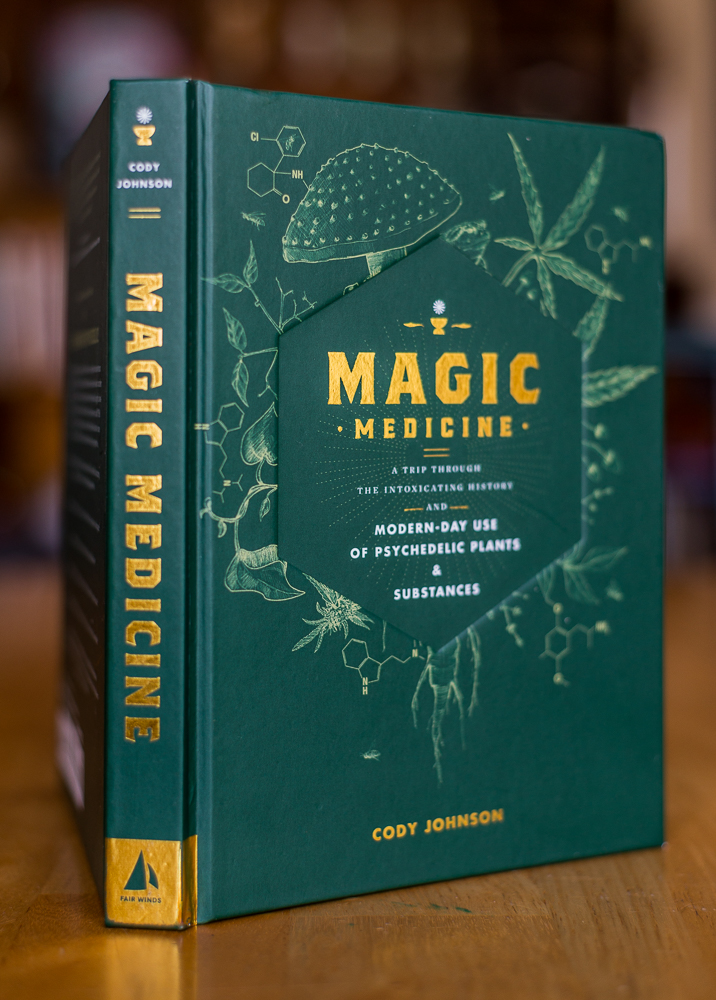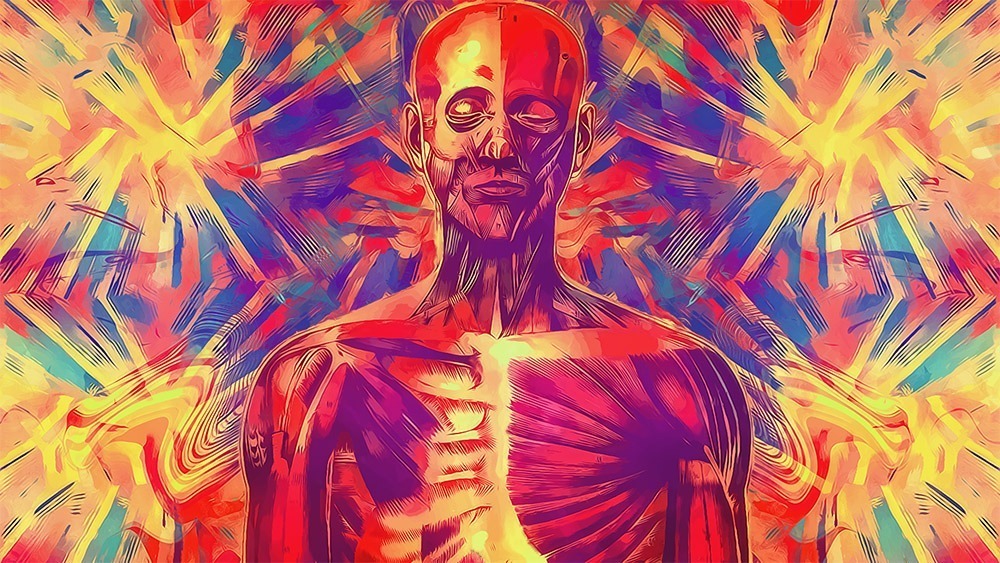
This article is by Shannon Clare, M.A., the Associate Director of Training & Supervision at the MAPS Public Benefit Corporation. It first appeared in the MAPS Bulletin Winter 2018: Vol. 28, No. 3 and is reprinted here with permission. Please consider donating monthly (or even just once) to support the incredible work that MAPS does to advance psychedelic science and profound healing.
![]()

Shannon Clare, M.A.
Just as a seed has within it the knowledge to grow, humans have an innate capacity to heal, when given the right environment to do so. When help is needed to create that environment, psychotherapy, like a greenhouse, can provide a container conducive to healing.
The term “inner healing intelligence” refers to the knowledge and power within oneself to move towards wholeness and wellbeing. There are many terms that could be used here; various paradigms of thought would articulate these concepts in different ways; some might reference Spirit, truth, unity, and there are many other terms that can and do carry similar meaning. I once heard a participant call it the “inner champion,” as she encountered what she experienced as its destructive counterpart, the inner critic. In this writing, I adopt the phrase “inner healing intelligence” and similar terms such as inner healer, deep knowing, innate wisdom. If you connect with the concept of an intrinsic ability to heal and grow oneself, I encourage you to consider any other name you like, and to think of that name as you read.
We can learn to hear our own voice of wisdom amidst the crowded room of the psyche. Cultivating the inner healer is part of cultivating deep relationship with oneself.
A seed has within it the intelligence to grow into a vibrant and blossoming plant. Given a nourishing environment, rich soil, water, air, and light, a seed will naturally develop into a mature and thriving plant. It will develop roots, establishing the ability to take in nutrients and water from the soil and stay grounded in the midst of erosion. Leaves develop to absorb energy from sunlight and carbon dioxide from air, so the plant can initiate photosynthesis and transform these ingredients into food. So long as the environment continues to provide what it needs, the plant will grow to full capacity, expressing its intrinsic qualities.
When the outside environment can’t provide what is necessary, a plant demonstrates signs of poor health: wilting leaves, pale color, blossom rot. If the conditions aren’t adjusted, the plant’s health will continue to deteriorate as it strives to survive. When the outside environment doesn’t have what the plant needs, a greenhouse can offer shelter, respite from extreme temperatures, and protection from the elements. The conditions inside the greenhouse are set specifically for the plant it intends to serve.
Like plants, our consciousness naturally flourishes when given a safe and supportive environment and encouragement. Accessing this inner healing intelligence is a process of honoring and expressing strength from within, coming from a place beyond mental chatter and negative self-talk, from alignment and clarity, even when our current experience may be of fragmentation and confusion. We can learn to hear our own voice of wisdom amidst the crowded room of the psyche. Cultivating the inner healer is part of cultivating deep relationship with oneself.
Unfortunately, many people are not in a place of encouragement and support. Like a plant in a time of flooding, or being perpetually whipped by harsh winds, being in an unsafe or unsupportive environment, whether for a short or long period of time, is a common characteristic of trauma. A traumatic event is one that causes (or threatens to cause) death, serious injury, or sexual and/or other kinds violence, which a person may experience directly or indirectly. During a traumatic event, instinct kicks in and the body’s resources are allocated to respond to the trauma—survival is the primary concern. The body’s trauma response is adaptive: in the face of threat, it is intended to save one’s life.
What happens, though, when the threat is no longer present? This was the focus of Peter Levine’s observation of animals in the wild when under attack by a predator: after surviving an assault, an attacked animal’s body may shake and tremor, a natural release of energy. Within a few minutes, animals returned to their resting state and resumed normal activity. What do humans need to do in order to “shake off” trauma? What do we need in order to heal?
Doing difficult trauma processing requires a degree of safety. This is challenging for people with PTSD, since symptoms such as flashbacks and hypervigilance make it difficult to differentiate between past and present threat. It’s especially challenging for people to find respite if they continue to be exposed to threats of injury. It’s important to acknowledge that many people are living continuously at risk of harm, and for future research and clinical practice to inform how best to deliver MDMA-assisted psychotherapy to actively threatened populations.
Inner healing intelligence blossoms in a context of safety. Like the protection a greenhouse offers, effective trauma therapy fosters a safe and supportive environment for people who are processing traumatic events and their impact. MDMA-assisted psychotherapy is designed with the intention to create a space for a person to come back to recognizing their own power, their own capacity to heal, to love, and to live a full life. In a safe setting, supported by two clinicians, and with ample time, participants are offered the chance to address the core issues of their trauma.
Therapists who help their clients establish a deep connection with their inner guide give a tremendous gift, one that can last as the client applies their own wisdom to a myriad of life’s challenges.
Just like the therapy team helps create a safe environment in preparation for, during, and after the MDMA therapy sessions, the MDMA itself simultaneously contributes to that sense of safety during the processing of trauma. From my experience with participants in recent trials, MDMA seems to reduce hypervigilance (always being on alert) and allow them the ability to face traumatic memories while remaining connected with the present reality, in which they know they are safe. With the assistance of MDMA, participants are better able to tolerate the process of trauma therapy.
The protocol for MDMA-assisted psychotherapy affords substantial time for participants to work through trauma. Study sessions, eight hours in total, are designed with enough time for the effect of MDMA to come on and, eventually, subside. The eight-hour therapy sessions allow the participant to go through their process without pressure to rush; it takes time to do deep healing work. It can be powerful when the therapists communicate, “There’s time for you, there’s time now for your healing process.”
All therapy visits are conducted by a co-therapy pair. With two therapists, the amount of care, attention, and interaction takes on a greater depth than is usually possible with just one. Each has a different perspective and contributes unique strengths. The participant will have a different response to each of the therapists, which adds richness to the therapeutic relationship. Both therapists are in service to the participant and their inner healing intelligence, and support each other in providing and improving this act of service. In addition to the benefit of relational support, two therapists are needed in order to sufficiently attend to the necessary protocols, such as taking vitals, monitoring hydration, administering psychological assessments, adjusting music, walking the participant to the bathroom, completing progress notes or source records, and conducting psychotherapy for the long eight-hour sessions, in which the participant is never left alone.
In some cases, the care from two therapists serves as a corrective experience to the abusive or neglectful ways the participant was treated in the past. For many people with traumas of abuse, attention from others was dangerous. The therapists act with integrity and take responsibility for upholding professional boundaries. By receiving ethical care, the participant gets an opportunity to experience nurturing and trustworthy relationships and to tend to their inner healing.
The results of the Multidisciplinary Association for Psychedelic Studies (MAPS)’ first completed study of MDMA-assisted psychotherapy for chronic, treatment-resistant PTSD (Mithoefer et al., 2011) highlight the impact of the therapy alone. After two eight-hour experimental sessions, 25% (2/8) of participants who received placebo had a greater than 30% drop in their PTSD symptoms (measured by the Clinician Administered PTSD Scale [CAPS-4]) and no longer met the diagnostic criteria for PTSD. While the sample size was small, this is a considerable change in response to the therapy modality without MDMA. By comparison, the MDMA experimental group had a much higher response: 83.3% (10/12) of participants who received MDMA had a greater than 30% drop in CAPS, and 10 no longer met diagnostic criteria for PTSD.
During preparatory sessions, the therapists discuss the structure of the sessions and outline specific ways in which they will be attentive to the participant. Directly stating the intention to support a participant provides a powerful experience for the participant, as the therapists set the tone for deep healing work. This affirms the container of safety, defining the growing conditions of the greenhouse. Below is an example of how the therapists might articulate some of the ways they will be supportive and ensure the participant’s safety. This example does not include all of the required elements to be discussed during preparation, but it touches on many, and would be part of a longer conversation about safety, support, and what to expect during an experimental session.
We are here to support you and your process; this day is for you. We will be here with you. We encourage you to ask for what you need and will also do our best to anticipate your needs. There are no silly questions. We invite you to express yourself in any way that feels right, whether that’s using your voice or moving your body, this can actually help the process unfold as things come up during the session. We are here to ensure your safety, we will be monitoring your vital signs and hydration. When you stand up or move we will protect you from falling or hurting yourself, such as helping you walk to the bathroom, or using a pillow to keep you from hitting the wall or the floor if you are moving your body. In the rare case of immediate medical concern, we will consult a physician. We already discussed with you some of the boundaries that protect you in this work, to reaffirm one of them, sexual contact isn’t part of this work and we won’t engage in that way. If you experience sexual energy you are welcome to talk about it and feel through it, if that seems helpful to your process, but not to act on those feelings during the session. We want you to know that we take your health and safety very seriously. Do you have any questions about what I’ve said so far?
We want to do whatever we can to make this the most helpful to you, please let us know if there is ever anything we can do more or less of, you won’t hurt our feelings. You don’t have to take care of us. Each of us will take a short break for lunch, one of us will always be with you. We want to know about your experience and encourage you to share your internal process by talking with us when it feels right; but not to feel any pressure to talk to us before the time is right for you; we will also check in with you regularly during the session to see what’s happening so that we can best support you. If at any point you feel stuck, overwhelmed, or confused, let us know, we will help, that is what we are here to do. As you work through aspects of trauma, difficult, scary, or seemingly overwhelming thoughts, feelings, or images may come up: we will be with you to support you in staying with them as much as you can in order to process and move through them. We are honored to be a part of your process.
Notice that the communication about safety emphasizes the ways the therapists will actively attend to the participant, and even intervene when necessary to prevent bodily harm. It’s important for the participants to know that the therapists are not passive. The therapists are attentive and responsive, responsible for ensuring safety throughout the session so that the participant can allocate their resources towards healing instead of defense.
Once the parameters of safety are established, the therapists discuss with the participant the concept of the inner healing intelligence. The therapists encourage the participant to consider, in a way that makes sense to them, that they have strengths and resources that are valuable assets in this healing journey. Throughout the treatment the therapists prompt the participant to reach for their internal resources, validating the participant’s strengths and capability while reinforcing that the therapists are presently supporting the process.
MDMA-assisted psychotherapy is inner-directed, meaning the therapeutic content and the direction of the session is informed primarily by the participant and their inner healing intelligence. The participant’s relationship with their internal source of power will outlast the course of treatment and their relationship with the therapists. When a participant is (re)acquainted with the confidence that they can lead a healthful life, they get to reap the rewards of their hard work and know it was them who made it happen. In the same way, at some point a well-cared-for plant will outgrow its greenhouse shelter, and go out into the world with the health and strength to protect itself and sustain its own life.
MDMA-assisted psychotherapy is designed with the intention to create a space for a person to come back to recognizing their own power, their own capacity to heal, to love, and to live a full life.
The complement to inner-directed therapy, guided by the participant’s internal wisdom, is non-directive therapy, which means that the therapists are not guiding the session in a particular direction or holding an agenda. This is counterbalanced with the active support the therapists give in ensuring the participant’s safety and wellbeing. It can be challenging for a therapist to be non-directive. Typically, we want to “do” something to help, especially when it is our job to help. An overly active therapist could inadvertently bypass or overpower the person’s own inner healing intelligence, robbing them of the experience to connect to their self-power. Therapists who help their clients establish a deep connection with their inner guide give a tremendous gift, one that can last as the client applies their own wisdom to a myriad of life’s challenges.
In communicating about the inner healing intelligence, the therapists may say something like:
We are here to support you and step in to offer help when needed. You are resilient, motivated, and wise. We want to endorse your strengths. We trust your process and ask you to try to do the same. If you come to a place of confusion or overwhelm, please let us know, we are here with you. At that point, we encourage you to take a few breaths, slow down if possible, and see if you can get in touch with the part of you that is connected to insight and clarity. In this work, you may find that, more often than not, deep down and with a bit of support and patience, it will become clear what to do, or to allow to happen, and you will find many of the answers you seek. A large part of this work is connecting to that place of inner knowing, it’s not easy and there’s no one right way to do it. We are here to help you navigate that process.
A greenhouse doesn’t intervene in the growth of a seed—it doesn’t tell a seed what it should or shouldn’t do. In fact, the greenhouse doesn’t even know how a seed grows to a plant. It just provides the right circumstances. In a very similar way, MDMA-assisted psychotherapy creates a container for safety and support, so that the participant can connect with their innate ability to heal and grow, through developing a relationship with their inner healing intelligence and, from there, working through trauma.
It takes courage and resilience for a person to pursue trauma therapy. I am hopeful that there are increasingly more effective treatment options to make this difficult journey worth the effort. My hope in this modality is that people can get their lives back, enjoy satisfying relationships and work and a positive sense of self, and that they will always know their intrinsic wisdom and ability to heal.
![]()
Shannon Clare Carlin, M.A., received her Master’s Degree in Integral Counseling Psychology from the California Institute of Integral Studies in 2014, including a practicum working with youth on moderation management for drug and alcohol use. At MPBC Shannon serves as Associate Director of the Training & Supervision Department, overseeing administration and program development to educate professionals and researchers to provide MDMA-assisted psychotherapy for PTSD in approved settings. Shannon is also committed to psychedelic harm reduction, and continues to provide integration services through the Zendo Project. Shannon served as co-therapist on the MAPS-sponsored Phase 2 trial researching MDMA-assisted psychotherapy for anxiety associated with life-threatening illness, and will be a co-therapist at the Phase 3 site in Los Angeles, researching MDMA-assisted psychotherapy for severe PTSD. She can be reached at shannon@mapsbcorp.com.
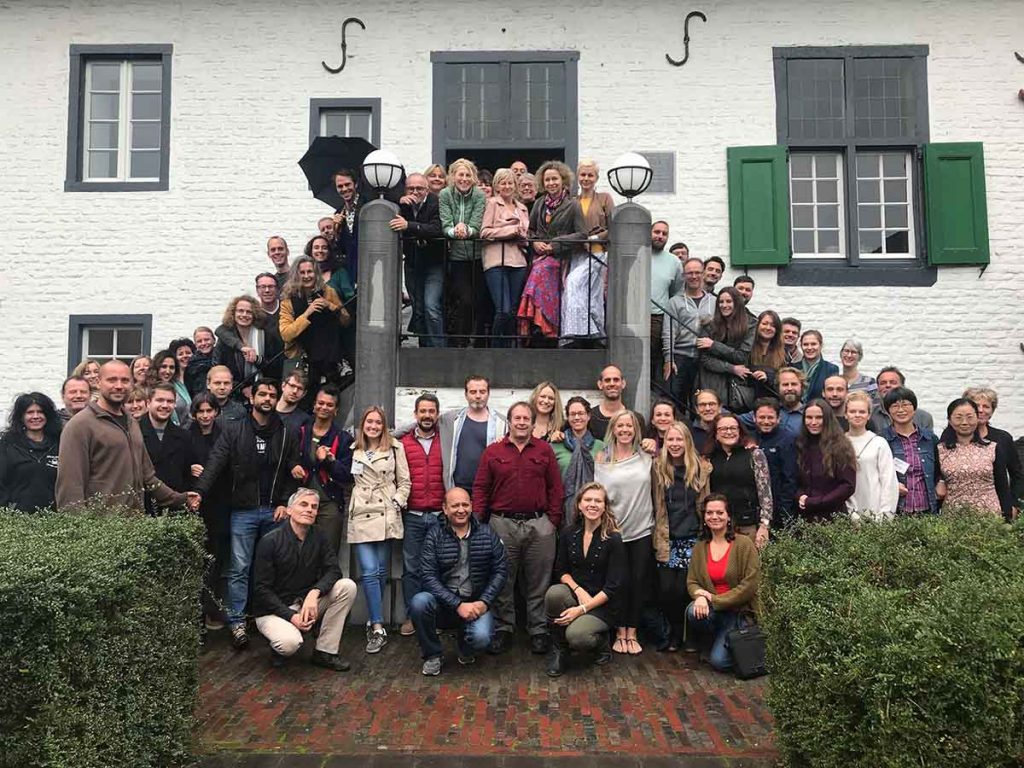
60 Therapy Training participants from 14 countries gathered in Landgraaf, Netherlands from September 26 – October 3, 2018, to attend Part B of the MDMA Therapy Training Program: learning about “inner healing intelligence” and how the concept translates internationally.
Liked this post? Subscribe to my RSS feed to get much more!

